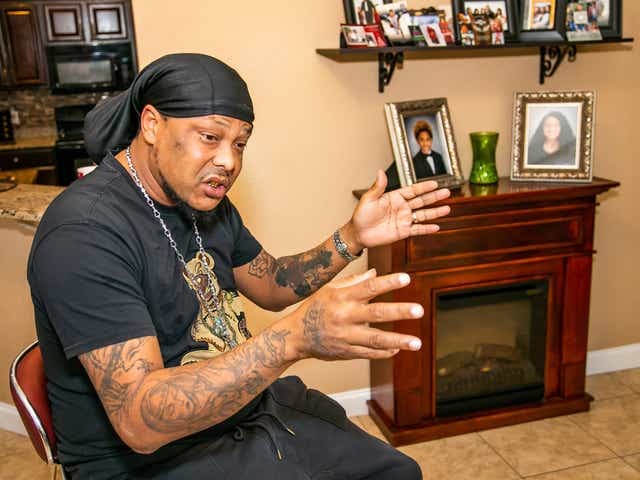Yesterday at the blogshoot, we did a bit of training on gunshot wounds. Several people in attendance asked me to do a post on the contents of a first aid kit. Let me start by saying that the way paramedics can tell the new guy from the experienced medics is in the amount of gear they tote around. Medics, fishermen, and gun owners have a trap that they commonly fall into, and that is the tendency to buy tons of gimicky crap when it comes to equipment.
Remember that serious trauma is first and foremost a surgical emergency. Trauma patients don’t need a tricked out first aid kit- they need a trauma surgeon. All they need you to do in the field is keep them alive and prevent them from furthering their injury until they can get on the operating table. So with that in mind, I take a minimalist approach to trauma first aid equipment. Please see the end of this post for disclaimers and conflict notice.
First aid kits that are filled with bandaids, sting ease, and other supplies are not good for this sort of work. Sure, I have one of those in the car, but band aids are not going to do you any good with a serious injury. Likewise, don’t get one that has suture kits and everything else, because you aren’t gonna need that and will likely screw it up anyway. Remember: simple. minimal. Stay in your lane.
The basics:
A pair of trauma shears. Most often used for cutting off your victim’s clothes. Don’t bother with the ones that have built in carabiners, bottle openers, glass breakers, or any of that other nonsense. You will likely throw these out once they are soaked in blood, so don’t waste a lot of money on a tricked out pair.
A compressed space blanket. Trauma patients need to be kept warm. After you treat them, wrap them in one. I used to keep the back of my unit heated to 90 degrees for trauma patients. Since we can’t do that, a space blanket is a great way to help with that.
A couple ( 2 or 3) packs of gauze soaked with a clotting agent. QuikClot is best, any of the other commercial alternatives (Celox for example) are acceptable. Many doctors will trash talk QuikClot, but every time one has told me that, the only reasons they can give are anecdotal. The plural of anecdote is not data.
A quality tourniquet. I prefer the CAT. Try to get one with the NSN number printed on it, that way it is more likely to be MilSpec and not a Chinese knock off.
A nasopharyngeal airway with a pack of KY to aid insertion.
An Israeli combat bandage. I like these because they can also be used as an ACE bandage, or (in conjunction with a triangular bandage) to stabilize arm/shoulder injuries, and other uses. Use your imagination.
A Hyfin Chest seal.
A pair or three of exam gloves.
If you don’t want to assemble a kit piece by piece, this is a good one. I just throw out the cheap tourniquet, then add a CAT, a Hyfin kit, and that handles most of what you will need in an emergency.
I follow the CoTCCC (Committee on Tactical Combat Casualty Care) Guidelines (see below) very closely and have designed trauma kit around them. All of the trauma treatment training I conduct is based on those guidelines.
Tactical Combat Casualty Care (Pronounced “T-Triple C”) is a set of guidelines developed by USSOCOM (United States Special Operations Command) to properly train non-medics to deal with the preventable causes of death in the field. With that in mind, remember that the single most important piece of gear that you have is the knowledge that you carry in your head. Seek out and get some training. Do not attempt to do any of this or use any of this stuff without knowing what you are doing.
Supporting documentation from the National Association of EMTs:
Basic Management Plan for Care Under Fire
- Return fire and take cover.
- Direct or expect casualty to remain engaged as a combatant if
appropriate. - Direct casualty to move to cover and apply self-aid if able.
- Try to keep the casualty from sustaining additional wounds.
- Casualties should be extricated from burning vehicles or buildings and moved to places of relative safety. Do what is necessary to stop the burning process.
- Airway management is generally best deferred until the Tactical Field
Care phase. - Stop life-threatening external hemorrhage if tactically feasible:
- Direct casualty to control hemorrhage by self-aid if able.
- Use a CoTCCC-recommended limb tourniquet for hemorrhage that is anatomically amenable to tourniquet use.
- Apply the limb tourniquet over the clothing clearly proximal to the
bleeding site(s). If the site of the life-threatening bleeding is not
readily apparent, place the tourniquet “high and tight” (as proximal
as possible) on the injured limb and move the casualty to cover.
Disclaimers and conflicts:
I have no financial conflicts to disclose, other than the fact that I do make money for training people in various aspects of trauma and medical care. I do not have a financial stake or interest in any of the products mentioned or linked in this post.
This post is not a substitute for training, knowledge, or does it imply that you should practice any of the techniques on this page without the necessary training, experience, and clinical judgement to apply these techniques. The writer assumes no responsibility for anyone who attempts to practice any of the actions on this page without first receiving training in the use or application of any of the procedures mentioned on this page.
People who have read this post: 1,530

